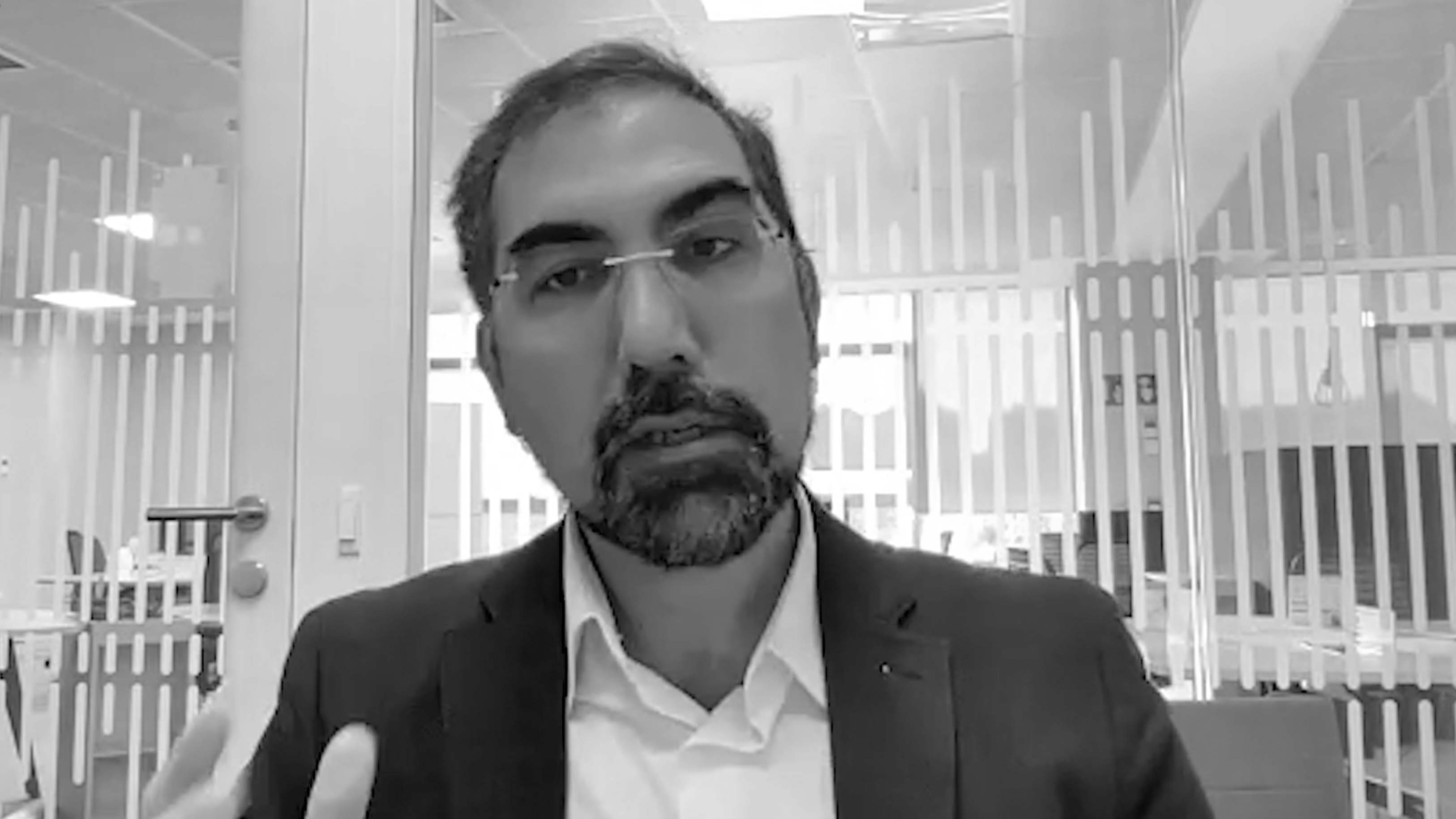
Adrian Cuj/Unsplash
In 2019, just over 5% of people in the UK reported working from home regularly. With the onset of the Covid-19 pandemic, that figure rose to 46.6% in April 2020 as we witnessed an unprecedented shift in the working landscape. Although restrictions have now been lifted, new working patterns are here to stay, with 36% of working adults reporting working at home at the beginning of this year.
As we moved beyond the initial phase of the pandemic, we witnessed the dawn of a new kind of worker and a new model of working. Across industries and countries, hybrid working is now the norm. In fact, 63% of organizations surveyed by the CIPD in 2021 reported that they planned to introduce or expand hybrid working.
While working patterns have shifted, businesses are also having to navigate an increasingly acute shortage of talent. Almost half (45%) of employers have hard-to-fill vacancies, according to the CIPD. In response to this challenge, 48% are raising pay and 46% are advertising more jobs as flexible. Driven by ongoing skills shortages, organizations are being incentivized to develop working practices that are inclusive and productive for all.
A new psychological contract
Hybrid working hasn’t just changed the individual lives of employers and employees, it has also changed the relationship dynamics between them. In any working environment, a psychological contract exists between the two parties – typically defined as a sense of fairness and trust. Psychological safety is one of the key indicators of a team’s performance, enabling people to take risks and be creative in their work without fear of being embarrassed or ashamed.
Hybrid working has changed the nature of the psychological contract…expectations have changed, and a hybrid environment, while more flexible, calls for greater trust.
The shift towards hybrid working has changed the nature of the psychological contract. Employers’ and employees’ expectations have changed, and a hybrid working environment, while more flexible, calls for greater trust and better communication to operate effectively. At the same time, employees are moving away from traditional demands for job security and towards newer demands for learning and development to improve long-term employability.
Navigating the opportunities and challenges
As with any change, hybrid working presents opportunities as well as challenges. Employers must work with their employees to understand both, and to come to an arrangement that is inclusive of different individuals’ needs. A key challenge facing organizations across the hybrid workforce is the impact of reduced face-to-face interaction and how this will affect employees psychologically and professionally.
Reduced time in a shared office space can limit opportunities for learning directly from colleagues. Employees working for prolonged periods at home can also experience loneliness and isolation, with fewer opportunities to socialize and build bonds with colleagues. The CIPD found that during homeworking in the Covid-19 lockdown, knowledge sharing and team relationships suffered.
On the other hand, hybrid working has many positives. The flexibility of hybrid working – and less time overall spent commuting – affords individuals more leisure time and greater capacity for caring responsibilities, wellbeing activities, learning new skills and volunteering. For some, including working parents, these benefits are the difference between a job being viable or not. Indeed, global EY research has found that more than half of employees would quit their jobs if not provided post-pandemic flexibility.
Yet, there is a risk for digital exhaustion caused by the increase of back-to-back online meetings. Work Trend Index 2022 reported that workday span for the average Microsoft Teams user has increased more than 13% (46 minutes) since March 2020, and after-hours and weekend work has grown even more quickly, at 28% and 14%, respectively.
Changes to the way we work do not affect everybody equally: working parents, women, neurodiverse individuals, and ethnic minorities may be disproportionately impacted.
Crucially, changes to the way we work do not affect everybody equally: working parents, women, neurodiverse individuals, and ethnic minorities may be disproportionately impacted. For example, it is possible that those attending the office more regularly receive more facetime with managers, making their work more visible and potentially increasing the likelihood of promotion.
If this is the case, working parents, carers looking after relatives with medical and mental health conditions, as well as people from underprivileged backgrounds or lower socio-economic backgrounds, can be disadvantaged. For example, access to jobs in London with requirement to work on-site means budgeting hundreds of pounds for peak-time daily commuting.
Recently, BBC reported some concerns by Apple staff, who believe mandating working from office three days a week will make the company “younger, whiter and more male-dominated”. This negative impact could disproportionately impact women, who are still more likely to take on the brunt of childcare duties, and therefore more likely to make use of flexible working policies. Women are already attuned to the potential negative impact on their careers. Deloitte has found that, out of nearly 82% of women who experienced negative disruption from the pandemic, almost 70% feared that it might limit their career growth.
Work where it works
There is no single correct way for organizations to manage the shift in working patterns. We’ve already seen a variety of responses, ranging from companies that have swung back to an office-based culture to others who are embracing hybrid working wholeheartedly.
Google is mandating workers to return to the office three days a week in some US, UK and Asia Pacific offices. Goldman Sachs, similarly, expects a full return to the office. In contrast, Salesforce has introduced a new hybrid working policy. Part of its approach involves making provisions for preserving employees’ health.
While some organizations have trialed a four-day working week without impacting salaries, a London law firm, Stephenson Harwood, provides an option to their employees to work remotely but at a cost: remote workers’ pay will need to be 20% less than their current salary. Therefore, the debate will likely continue across industries, and negotiations between employees and employers will need to be handled sensitively as employees may be easily tempted to resign if their expectations are not met.
At NTT DATA UK, we have a ‘work where it works’ policy. If a person finds that they do their best work in the office, we have the facilities to support this. If they require flexibility and want to work from home, we can accommodate that too. The most important thing for us is to provide a system suited to individual needs.
As organizations formulate their strategy for work going forwards, it’s crucial that the workforce is part of this process. Businesses must carefully consider the impacts on different individuals and groups. It’s tempting to search for a one-size-fits-all approach and emulate it, but each business must focus on creating a working model that aligns with its own corporate values and purpose.
We need a strategic approach to the hybrid workplace and we need policies that will guard against the kind of inequalities that may arise from new ways of working.
Following the pandemic, our working norms are still in flux as companies try to settle on approaches that bring the best of both remote and face-to-face engagements. This is an organizational transformation, and companies who use tools for managing effective business change will be better able to equip staff to make the most of hybrid working.
A hybrid working vision and roadmap should form a core part of any organization’s communications plan. It’s vital that this roadmap is clearly relayed to the workforce, and that all communication is based on empathy and an understanding of individuals’ needs. We need a strategic approach to the hybrid workplace and we need policies that will guard against the kind of inequalities that may arise from new ways of working.
People lie at the heart of every organization, and their wellbeing is pivotal to the success of the business. Having a collaborative approach to setting hybrid policies – with buy-in across all levels of the organization – can help build loyalty and promote a closer-knit community and culture that facilitates individual needs, and improves retention in the long-term. To ensure the wellbeing of the workforce, trust, empathy and transparency are key. With an approach founded on these principles, businesses and their employees can successfully navigate challenges and make the most of the opportunities available in the hybrid working world.
With thanks to the co-contributors of this article: Miona Cvetkovic, Business Consultant – Digital Transformation & Change, NTT DATA UK, and Hannah Timson, Associate Consultant, NTT DATA UK.







































